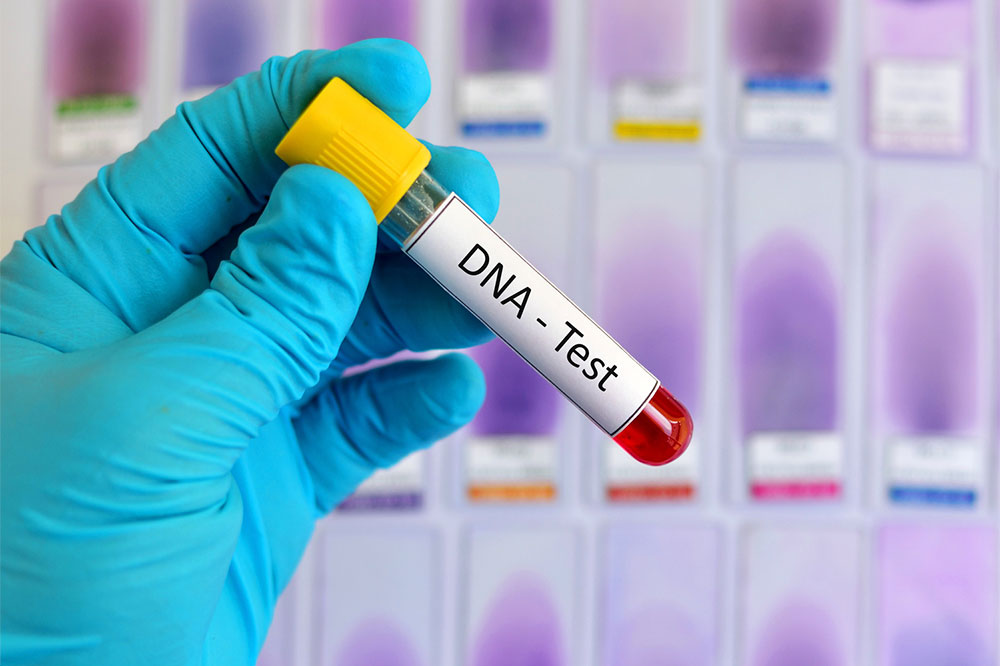DNA Testing – Definition, Types, and Procedure
Your body receives DNA from your parents. DNA is made up of genes, chromosomes, and proteins. Even though DNA or Deoxyribonucleic Acid is very little, you will be surprised to know how much information it can hold. Getting a DNA test to determine if someone is a child’s father is one of the most common reasons for getting the test done. However, the scope of DNA testing is much beyond establishing paternity.
DNA testing or genetic testing
Also known as genetic testing, it is used by doctors to identify changes in genes, chromosomes, and proteins, if any. The results of this test can be used to identify any genetic condition that might be suspected or the chances of developing a genetic disorder in a person.

There are certain benefits, limitations, and risks that come along with DNA testing. Therefore, this test is entirely voluntary, wherein the concerned person is well aware of all the potential risks before approval. This test is also conducted by some psychiatrists or genetic counselors to identify an individual’s social and emotional condition to deal with their mental issues.
Types of DNA testing
Based on the test’s reason, the doctor will choose the best genetic testing that needs to be done. The doctors can get a specific DNA test if the suspected condition is specific.
Some prevalent types of DNA testing include the following.
Gene expression tests
This type of testing is carried out to determine which genes are active or inactive in various cell types. The mRNA, produced in a cell from the DNA instructions, is used to make proteins. This mRNA is studied in the gene expression test to determine the active genes. Unequal activity levels can indicate a genetic disorder and many cancer types.
Chromosomal tests
These tests analyze the chromosomes, which are the long length of DNA, to identify any changes happening on a large scale. The results can include a missing copy, an extra copy of a chromosome, a duplicate or missing chromosome, or the translocation of a chromosome. This may indicate the presence of certain genetic conditions, and the chromosomal test can identify the condition.
Biochemical tests
This DNA testing type does not directly analyze the DNA but studies the number of proteins and enzymes produced from the genes. If a type of abnormality is found in these substances, there might be a genetic disorder flourishing.
Molecular tests
These tests look for changes in one or more genes. With the molecule tests, the order of DNA building blocks is determined through DNA sequencing. These tests come in further divisions, which are:
Targeted single variant
Single gene
Gene panel
Whole-genome sequencing
How is DNA testing done?
DNA testing is carried out after genetic consultation. Genetic tests can be performed with the help of a blood sample, hair, skin, or any other tissue. Generally, doctors make use of a cotton swab to collect tissues from the inside part of a cheek. The sample is sent to the laboratory, where an assessment is made regarding specific changes in the chromosomes.
A report is then created for the doctor or the genetic counselor to read. They assess the changes and identify the DNA or blood issues. Accordingly, the treatment for the patient is prescribed.
However, informing the patient of the risks and repercussions of getting the test done is important. The test should be voluntary; the doctor can only prescribe it to the patient. The process of informing the patient about the test and obtaining their permission is known as informed consent.
However, it is not always necessary to seek permission or a prescription from the doctor to get the test done. Anyone who wishes to take this test can go directly to the testing company, who will then generate a report based on the test results and explain that to the person concerned.
What are the uses of DNA testing?
It is done for various purposes. When a child is newly born, the testing can help identify genetic orders, if any, so that they can be treated at the earliest. If a person is experiencing any cancer or genetic disorder symptoms, DNA testing can help the doctors identify it and start the diagnosis and treatment accordingly. People also get the testing done in cases of divorce or child custody, where they might need to prove that they are the child’s biological parents.
DNA testing has become quite prevalent today, in lieu of the genetic diseases gaining widespread attention. However, everyone needs to understand the significance of informed consent in decisions like DNA testing.

